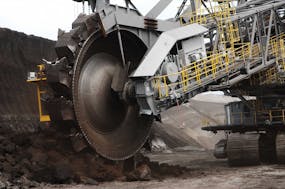In 2018, Switzerland emitted 4.33 tons of CO2 per capita – twice as much as India and a quarter of the amount of the US. According to the government’s goal, CO2 should be reduced to net zero by 2050.
Road traffic currently accounts for around 30 percent of emissions. While a positive sign of economic dynamism, the high mobility level of the population is one reason why the Swiss produce about one ton of carbon dioxide per capita per year on the roads. Today’s environmental regulations stipulate vehicles should have a maximum CO2 emission of 95 grams per kilometer. A car fulfilling these requirements can travel almost 13,000 kilometers per year, a standard SUV half that distance.
Everything depends on the electricity mix
Today’s legal regulations say an electric car can travel an unlimited distance, since its CO2 emissions are counted as zero grams per kilometer. But this clearly illustrates the inconsistency of Swiss transport policy: electric vehicles are far from being CO2-neutral, even though the Swiss electricity mix is climate-friendly by international standards. Calculated over a lifetime of 200,000 kms, an electric vehicle emits about one quarter less carbon dioxide than an internal combustion engine. That’s certainly not bad – but it is not net zero.
There are currently around one billion conventionally powered vehicles on the road worldwide. Meanwhile, electric and hybrid powered cars account for about 10 percent of new vehicle sales in Switzerland. To replace the entire vehicle fleet with electric cars by 2050, every second new car registered from now on would have to be electric, and, from 2040, every single one. And even in this hypothetical case, the CO2 footprint of traffic would still be far from net zero.
Meanwhile, battery charging has still not been adequately adressed. The German example shows costs remain relatively high, even when electricity prices are kept artificially low. Big spending is also needed to provide enough charging points. If private transport were to turn completely electric , it would account for up to one quarter of today’s electricity consumption.
Realistic goals needed
It is clear that, if government policy sticks to a single technology and bans certain types of vehicle propulsion systems, Switzerland will not achieve its goal of climate neutrality in transport.
But it is at least conceivable to approach the 2050 zero emissions target, according to forecasts by researchers at state agency EMPA: That requires the “electrification” of future engines, along with a broader vehicles mix. Fossil fuels like gasoline and diesel would be replaced by sustainably produced synthetics. For certain applications, hydrogen technologies would be appropriate; in other cases, electric propulsion would work. Hydrogen is particularly flexible, in that it could be used to power trucks or as a storage medium, based on the fact that surplus solar power in summer could be used to split water in its constituent elements (hydrogen and oxygen) and thus store energy.
To encourage the motor industry to exploit such opportunities requires an appropriate regulatory framework open to new technologies, rather than extra politically motivated rules and subsidies. New subsidies just create new dependencies. Once hooked, car and truckmakers will feel entitled to receiving public funds. For this reason alone, subsidies for specific technologies should be avoided.
No technology bans
Unbiased regulation means removing any bans on specific technologies. Even high-profile mobility experts with close ties to environmental organizations consider an exclusive focus on e-mobility wrong. The blunt demand for “zero gasoline, zero diesel” is not sensible.
Such thinking is now evident in China, the world’s largest car market, where electric mobility was supported until recently and is now in sharp decline, and where the government has started talking about methanol and hydrogen vehicles.
Even if Switzerland races into a decarbonization strategy requiring heavy subsidies of renewables like hydro, wind and solar power, it will remain dependent on fossil fuels like coal, gas and oil for some time. So openness to technology contributes more to improving the ecological balance.
What is needed is a holistic view – and that is what makes the issue so complicated. Supposedly simple solutions, as demanded by the environmental lobby, will either miss their goals or make things worse. Moreover, the reduction of CO2 emissions cannot be limited to mobility – the construction industry and agriculture should also be covered. But here, too, a techno-neutrality should stake prioritiy over new bans and costly levies.





